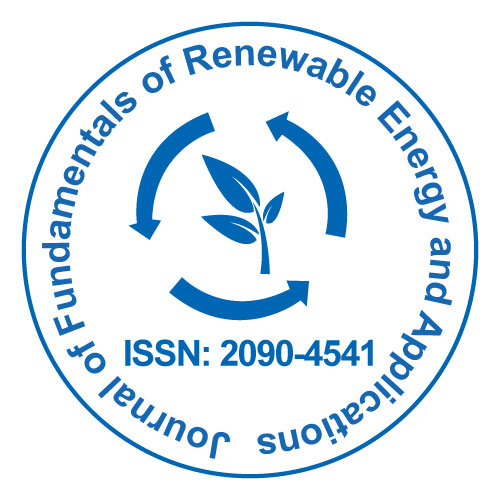
Journal of Fundamentals of Renewable Energy and Applications
Open Access
ISSN: 2090-4541
+44 1300 500008

ISSN: 2090-4541
+44 1300 500008
Perspective - (2022)Volume 12, Issue 1
Wave energy has the ability to considerably contribute to global electricity consumption. Most wave energy concepts need the deployment of wave energy converters for producing electricity in the MW range. Although still in its early stages, wave energy is obviously a developing sector. It is environmentally friendly, renewable, and clean. Wave energy absorbers can absorb substantially more energy per square foot than solar or wind power, and they do it at a much reduced environmental cost.
Wave climate, wave direction and variability, ocean depth, currents, and distance from shore are all aspects that influence the wave energy system, and different locations and environmental conditions necessitate different best solutions. Under given limitations, optimization is the process of identifying the optimum solution from a set of accessible options.
In perhaps the most basic form, an optimization issue consists of maximizing or minimizing a functional purpose by systematically selecting input values from a permitted set and determining the function's value. In a more sophisticated situation, optimization entails determining the optimum available values of some optimal solutions given a particular parameter space.
We consider viscosity and rotation are crucial fluid parameters to consider when evaluating the detailed response and loading of single WECs, potential flow theory is the prevailing assumption when considering large arrays of WECs. However, wave directionality, or waves that propagate in multiple directions.
Michael Faraday discovered that when a magnet travels through a coil of wires, it generates an electrical charge that may be retained in a capacitor or generator if the ends of the wire on either side of the coil are connected to that generator. This technique is used in both the Faraday (shaking) flashlight and "point absorbers" or wave power buoys.
Today, most current motors are based on Faraday's motor. Energy can travel in one of two directions. The first is similar to a flashlight and wave power buoys in that they generate energy by creating a magnetic field. The other method involves passing electricity through the coil, resulting in an electromagnet that can propel an object connected to a magnet.
The scale, production, and design of the projects that are already in the works vary greatly. The basic design, however, follows the same principles as the Faraday flashlight, which is powered by shaking it. A coil of wires is coiled around the inside of a buoy in this design. The magnetic field becomes stronger as the number of coils increases. This means that more power will be generated, but it also means that the buoy must be considerably larger in order to keep this gigantic coil of metal at the water's surface. The buoy can be made of plastic or metal and has a hollow chamber inside it that is filled with air to keep it afloat.
There are just a few obstacles preventing wave energy from prospering, the most harmful of which is a web of regulations and government institutions in place to monitor wave energy projects. The majority of them are environmental legislation, while others deal with historical or cultural preservation and others with energy management. A strategy like the one below, on the other hand, is an immediate disincentive for an energy business looking to build a renewable energy project.
Citation: Muller F (2022) Challenge and Applications of Wave Energy. J Fundam Renewable Energy Appl. 12:284.
Received: 24-Feb-2022, Manuscript No. JFRA-22-18067; Editor assigned: 28-Feb-2022, Pre QC No. JFRA-22-18067 (PQ); Reviewed: 18-Mar-2022, QC No. JFRA-22-18067; Revised: 28-Mar-2022, Manuscript No. JFRA-22-18067(R); Published: 05-Apr-2022 , DOI: 10.35248/2090-4541-22.12.284
Copyright: © 2022 Muller F. This is an open-access article distributed under the terms of the Creative Commons Attribution License, which permits unrestricted use, distribution, and reproduction in any medium, provided the original author and source are credited.